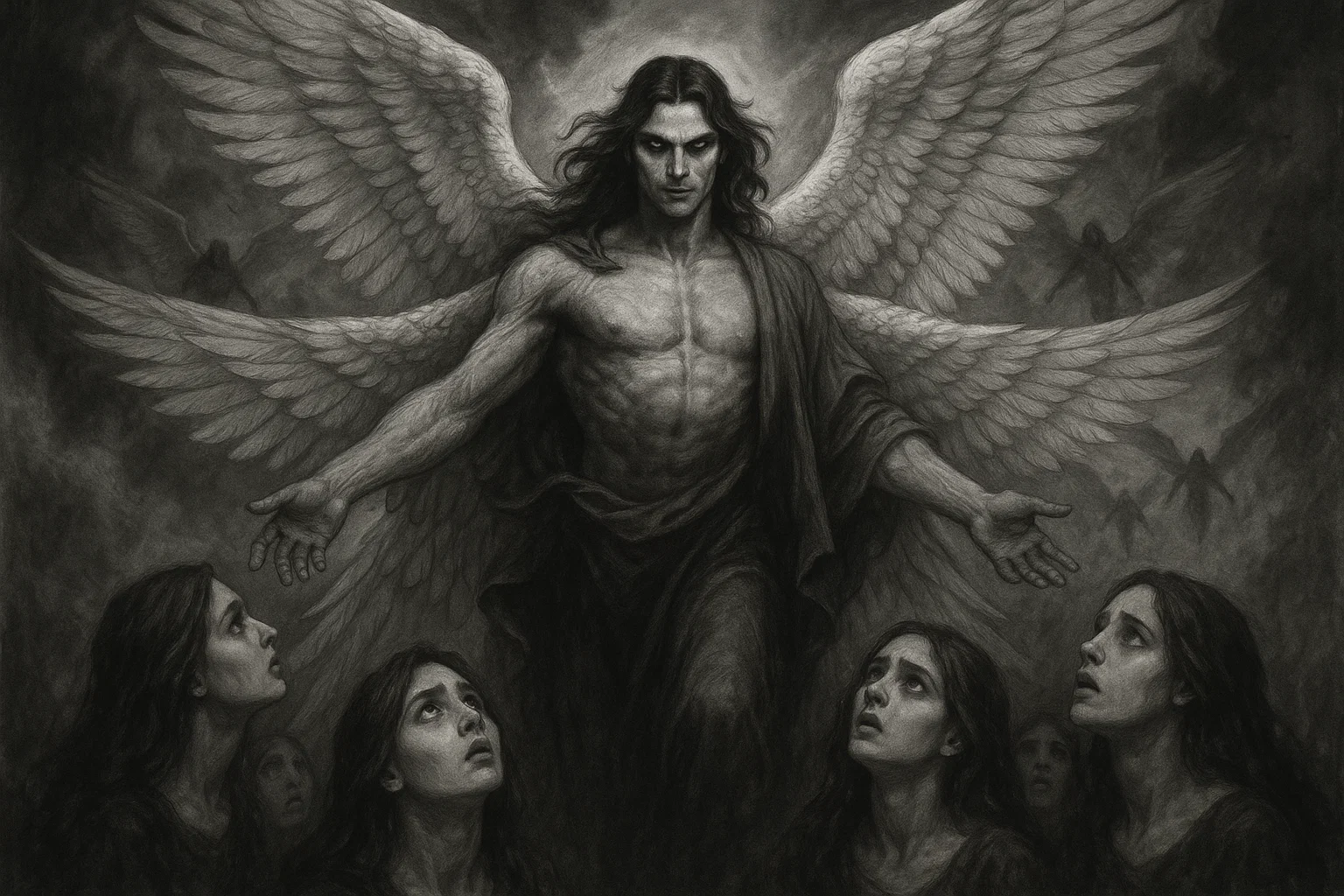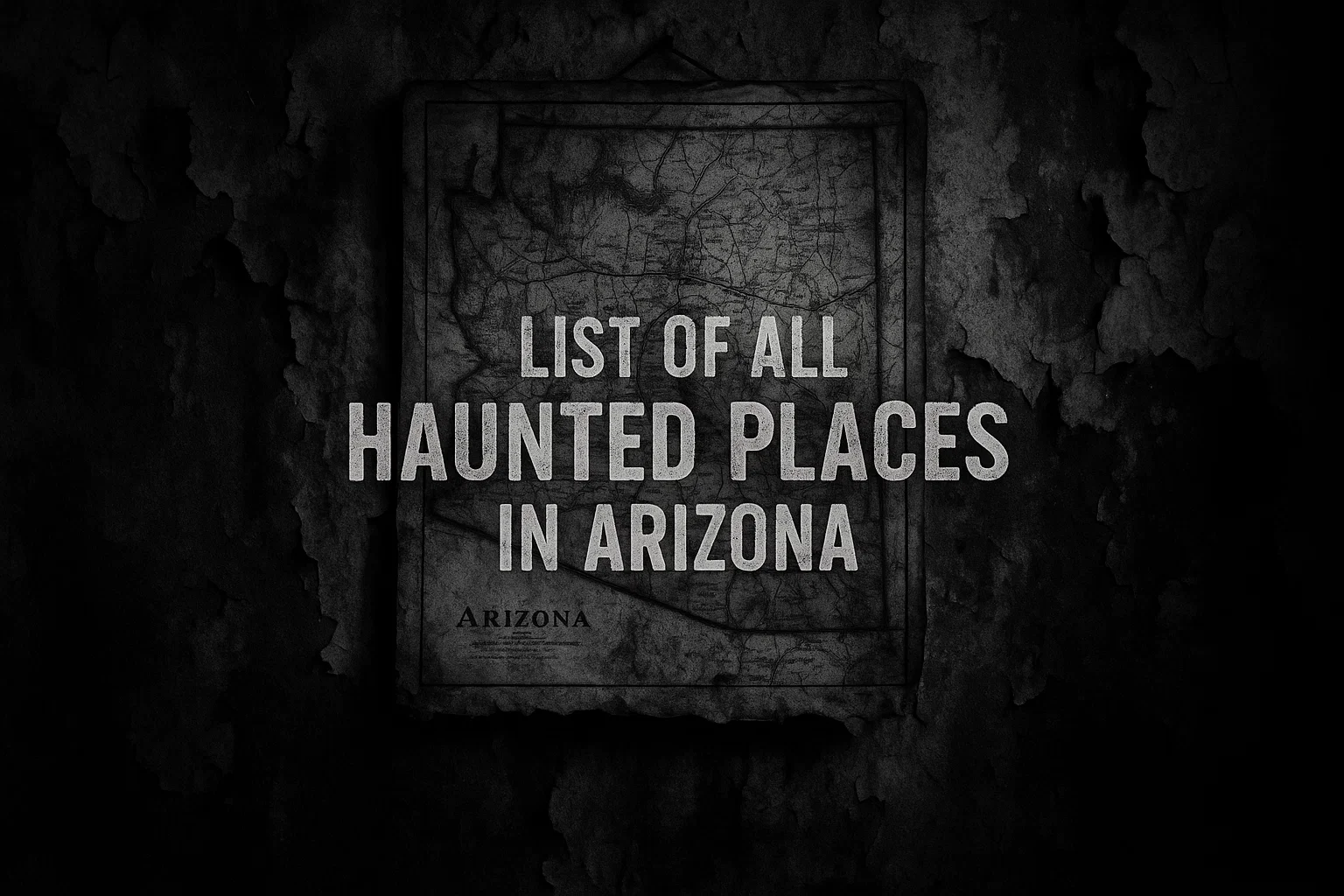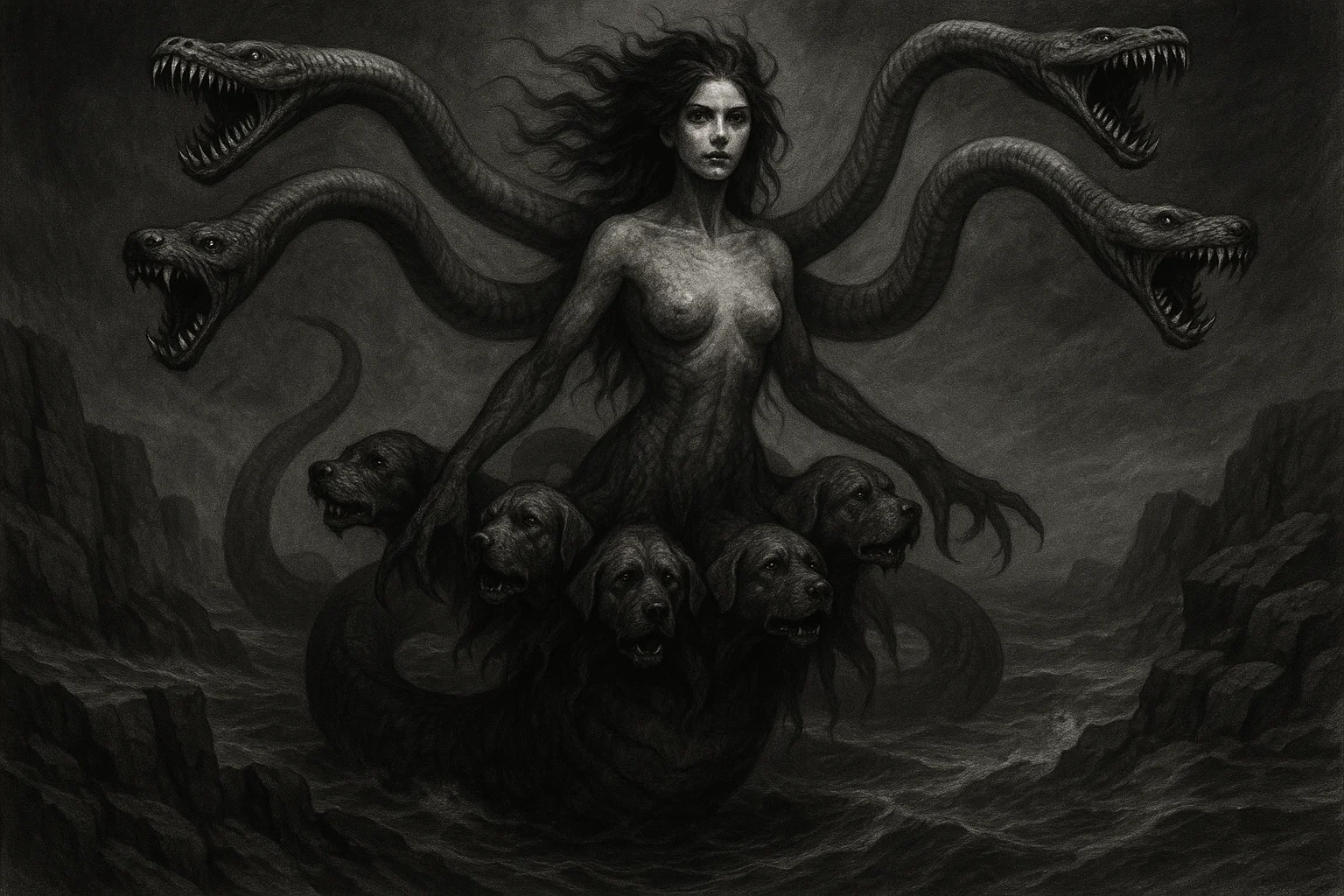In the shadowed veil where divine wrath meets mortal folly, Azazel lurks as a harbinger of corruption, his name echoing through ancient rituals and forbidden tomes. Who is this enigmatic fallen angel cast into the desolate wilderness, eternally burdened with humanity’s darkest sins? What cataclysmic secrets did he unleash upon the world, forging paths of war and vanity that still tempt the unwary?
As Azazel weaves through myths of rebellion and exile, one wonders: Could his chained form in jagged abysses hold the key to understanding the fine line between enlightenment and eternal damnation? These questions draw seekers into the abyss of Azazel mythology, where the demon Azazel embodies the perilous allure of knowledge twisted into ruin.
Delving deeper into Azazel powers and his role as a Prince of Hell, readers confront the chilling reality of a being who defies celestial order, corrupting souls with whispers of power and deception. Is Azazel merely a scapegoat for human frailties, or the architect of unending strife?
Summary
Key Information
| Category | Details |
|---|---|
| Name | Azazel, Azael, Asael, Azaziʿil, Azazeel, Hazazel, Aza’el, Za-za-e’il, Azazil, Azazello, Azazyel |
| Title | Chief of the Watchers, Leader of the Grigori, Scapegoat Demon, Archdemon of the Desert, King of the Se’irim (Goat-Demons), Prince of Hell, Fallen Seraph of Weaponry, Eater of Sins, Guardian of Hidden Treasures, Demon of War, Deceiver of Humanity, Lord of Forbidden Knowledge, Prince of the Fallen Darkness, Yellow-Eyed Demon |
| Gender | Male |
| Role | Teacher of forbidden knowledge including weapons, cosmetics, witchcraft, metallurgy, alchemy; corrupter of humanity through temptation and deception; scapegoat recipient in atonement rituals; leader of fallen angels; instigator of wars, vanity, and godlessness; commander of infernal legions; tempter of pride, ambition, and moral decay |
| Hierarchy | Chief leader among the Watchers/Grigori in Enochic lore; Prince of Hell in Christian demonology; High Prince of the Fallen Darkness; subordinate to Lucifer/Satan as a commanding prince; autonomous ruler of desert domains; outranks lesser demons but yields to infernal trinity |
| Servitors | Se’irim (goat-like desert spirits and demons); sedim (Assyrian guardian spirits spawned with Naamah); legions of lesser demons and black-eyed demons under his command; Maskim (Akkadian princes of Hell); various Watchers like Armaros, Baraqijal, Kokabiel; Nephilim hybrids as corrupted offspring |
| Superior Demon | Lucifer (primary overlord in Christian and Enochic traditions, who freed him from chains); Samael (in Kabbalistic identifications as fused entity); Iblis (Islamic pre-fall association as Azazil); Beelzebub (punisher of his cabal in some accounts) |
| Powers | Imparting metallurgy, weaponry, and warfare tactics; teaching cosmetics, adornments, and deception arts; revealing occult secrets like herbalism, alchemy, astrology, witchcraft; commanding spirits and legions; shape-shifting into various forms; influencing wars, vanities, and moral corruption; consuming and whispering sins; guarding treasures and distorting reality; telepathic manipulation; body-hopping possession |
| Appearance | Shape-shifter: gloriously beautiful winged angel pre-fall; twelve-winged dragon with human hands and feet; unclean bird with seven heads and fourteen faces; red-skinned demon with yellow eyes, barbed tail, and jagged scales; goat-skulled figure with cloven hooves; serpent-like tempter; mass of darkness with multiple mouths and eyes; crystalline dragon resembling Set; black-skinned with wings and red laser abilities |
| Etymology | From Hebrew ʿăzāʾzēl: “God strengthens” (ʿazaz + ʾel), “rugged cliff” (ʿaz + ʾel), “the averter,” “strong one against God” (Peshitta); linked to scapegoat as “sent away” or “complete removal”; possibly from Canaanite Asiz or Egyptian Seth influences; connected to Uza and Azael in rabbinic texts |
| Associated Figures | Raphael (binding archangel); Samyaza (fellow Watcher leader); Naamah (consort, mother of sedim); Abraham (confronter in Apocalypse); Enoch/Metatron (opposed in 3 Enoch); Harut and Marut (Islamic parallels as fallen angels teaching magic); Prometheus (Greek analogue for knowledge theft); Iblis/Shaytan (Islamic fall parallel); Lilith (occasional ally in seduction); Hellboy (son in pop culture) |
| Weaknesses | Binding by archangels like Raphael’s chains in Dudael; holy rituals such as Yom Kippur scapegoat expulsion; iron devil’s traps and salt circles; invocations of opposing angels like Michael or Metatron; spiritual rebuking through faith; vulnerability to holy angels’ strength; imprisonment until Judgment Day |
| Opposing Angel/Saint | Raphael (primary binder and punisher); Michael (archangelic protector in hierarchies); St. John the Baptist (exorcistic traditions against vanity); Enoch/Metatron (rival in heavenly ascent and opposition); Gabriel and Uriel (witnesses to his fall) |
| Equipment/Tools | Blasting rod or mysterious wand for summoning rituals; swords, knives, shields, breastplates from taught crafts; antimony for cosmetics and eye paints; costly stones, tinctures, and alchemical elixirs; iron chains for binding or self-restraint; scarlet thread from scapegoat rites; sigil etched in Saturnian kamea |
| Pantheon | Abrahamic (Judaism, Christianity, Islam); Enochic/Pseudepigrapha traditions; Semitic desert cults with goat-demons; Akkadian (Maskim envoys); Mandaean (as uthra Azaziʿil); parallels in Greek (Prometheus), Egyptian (Seth), Canaanite (Asiz), Babylonian degraded deities |
Etymology
The name Azazel stems from the Hebrew עֲזָאזֵל (ʿăzāʾzēl), a multifaceted term laden with layers of ritual, rebellion, and demonic essence that has puzzled scholars for centuries.
In its biblical roots from Leviticus 16, it is often dissected as a compound of ʿaz (meaning strong, rugged, or goat) and ʾel (God), suggesting interpretations like “the strong one of God” or “God strengthens,” ironically portraying a figure who defies divine authority through corruption. This etymological duality highlights Azazel‘s transformation from potential celestial might to a symbol of unyielding malice, where strength turns against its creator.
Wilhelm Gesenius, a 19th-century lexicographer, proposed “the averter” as a key meaning, implying a role in diverting or removing sins, aligning with the Yom Kippur scapegoat ritual where impurities are averted from the community.
The Septuagint, the Greek translation of the Hebrew Bible from the 3rd-2nd century BCE, renders it as “apopompaios,” or “the one sent away,” emphasizing expulsion and complete removal, while the Vulgate uses “caper emissarius” (emissary goat), reinforcing the notion of a bearer dispatched to desolation. In Syriac traditions via the Peshitta, it becomes Za-za-e’il, translating to “strong one against God,” underscoring defiant opposition and hubris that led to his fall.
Rabbinic expansions in texts like the Mishnah and Zohar connect Azazel to Uza and Azael, fallen angels from Genesis 6 associated with fornication and corruption, suggesting phonetic and thematic links to earlier Semitic deities.
Possible influences from Canaanite Asiz, a god of scorching sun, or Egyptian Seth, lord of chaos and deserts, add cross-cultural depth, portraying Azazel as a degraded Babylonian deity elevated from demon to ritual entity. In Islamic lore, as Azazil or Azazeel, the name evokes “beloved of God” pre-fall, twisting into apostasy, with Arabic roots hinting at rarity or preciousness turned to rarity of virtue.
Mandaean traditions soften it to Azaziʿil as a luminous uthra, but Abrahamic strands dominate, framing the demon as a paradigm of etymological enigma—strong yet severed, divine yet damned, a name that encapsulates the essence of temptation’s rugged path.
This linguistic evolution not only anchors Azazel in ancient Near Eastern contexts but also propels him into demonological realms, where his name invokes powers of deception and exile. Scholars note parallels with Akkadian terms for envoys of Hell, like Maskim, suggesting Azazel as an infernal ambassador, his etymology a bridge from topographic cliffs to cosmic chasms of sin.
You May Also Like: Ose: The Insanity Inducing Demon of the Ars Goetia
What Does the Demon Azazel Look Like?
Azazel‘s form defies singular depiction, shifting to embody deception and terror, a visual testament to his corrupting essence.
In his pre-fall state, he appears as a gloriously beautiful man with expansive wings, radiating an allure that masks his malicious intent, drawing victims into traps of forbidden desire. This angelic facade, with eyes like polished onyx and a presence evoking smoldering forges, serves as a lure for the ambitious, promising power while sowing seeds of downfall.
Post-fall, Azazel morphs into grotesque horrors: a red-skinned demon with glowing yellow eyes that bore into souls, a barbed tail coiling with serpentine menace, and limbs clad in jagged metallic scales forged from his own dark arts.
Goat skulls crown his brow, horns curling like wrought iron, nodding to his dominion over Se’irim goat-demons, while twelve leathery wings—six on each side—sprout from a humanoid frame etched with runes of alchemy and warfare.
In the Apocalypse of Abraham, he descends as an unclean bird with seven serpent heads and fourteen faces, a hybrid abomination blending avian predation with draconic fury, hands grasping at earthly dominions.
Other manifestations include a twelve-winged dragon with human hands and cloven feet, symbolizing the fusion of celestial rebellion and beastly vice; a mass of writhing darkness studded with countless mouths and razor-sharp eyes, devouring sins; or a crystalline, dragon-like entity resembling Egyptian Set, armored in shards that reflect victims’ fears.
In pop culture depictions, such as in games, he emerges black-skinned with bat-like wings, firing red brimstone lasers, or as a locust-monster commanding technologies.
These traits—matted feathers dusted with desert sands, cloven hooves trampling purity—radiate an aura of wilting beauty and acrid smoke, a visceral reminder of Azazel appearance as the ultimate deceiver, his forms tailored to exploit weaknesses and perpetuate corruption.
Historical and Mythological Background
Azazel‘s origins trace to ancient Semitic wilderness cults, where desert spirits and goat-demons like the Se’irim received offerings to appease chaotic forces, evolving into a figure of profound malice in Abrahamic traditions.
Emerging around the 3rd century BCE in Enochic literature, he embodies the corruption of heavenly watchers, with potential connections to degraded Babylonian deities, Canaanite Asiz (scorching sun god), and Egyptian Seth (chaos lord), sharing themes of desert exile, rebellion, and destructive knowledge.
These cross-cultural ties position Azazel as a syncretic demon, blending Near Eastern jinn-like entities with Greek Prometheus’s fire-theft, Islamic Iblis’s refusal, and Akkadian Maskim envoys of Hell, highlighting universal archetypes of fallen wisdom-bringers who sow discord.
Origins and Ancient Connections
The genesis of Azazel lies in primitive Semitic tribes, non-Hebrew nomads who sacrificed to goat-like demons haunting desolate landscapes, as noted in Leviticus 17:7 prohibiting such rites. This desert association links him to jinn or faun-like beings, possibly influenced by Roman satyrs or Arabian ghuls, where wilderness symbolized impurity and supernatural peril.
In Babylonian lore, degraded deities like those in Mandaean texts cast Azazel as Azaziʿil, a once-luminous uthra turned adversarial, paralleling Sabean and Arabian mythology’s desert guardians.
Connections extend to Egyptian Seth, god of storms and foreign lands, sharing red-hued chaos and animal hybrid forms; Canaanite Asiz, whose solar scorching mirrors Azazel‘s fiery judgment; and Greek Prometheus, punished for gifting fire—akin to Azazel‘s chained exile for metallurgy.
Islamic parallels with Harut and Marut, angels teaching sorcery as tests, and Iblis (pre-fall Azazil), underscore hubris’s fall, while Akkadian Maskim position him as Hell’s prince-envoys. These origins frame Azazel as a cosmic outcast, his malice rooted in ancient fears of untamed wilds and forbidden pacts.
You May Also Like: Mahazael: The Demon Prince Who Devours Earthly Beauty
The Scapegoat Ritual in Leviticus
In Leviticus 16, dated traditionally to 1446–1400 BCE or scholarly to 5th–3rd century BCE, Azazel centralizes the Yom Kippur atonement amid the Tabernacle’s sacred haze.
High Priest Aaron selects two identical goats by cleromancy lots: one for Yahweh, sacrificed in blood rites for purification; the other for Azazel, confessed over with Israel’s sins—idolatry, fornication, bloodshed—via laying hands, then marked with scarlet woolen thread symbolizing impurity.
Led by an appointed man to the Judean wilderness, often Beth Ḥadudo (12 miles from Jerusalem), the goat is pushed from a precipice like Jabel Munttar, its mangled body signifying sin’s shattering expulsion.
This rite, echoing 2400 BCE Eblaite adorned she-goat banishments, served apotropaic purposes, averting divine wrath by returning corruption to its desert source.
Rabbinic details in Mishnah Yoma describe eminent escorts, booths along the path, and signals from hilltops confirming the goat’s fate, with the thread whitening as forgiveness’s omen during Simeon the Just’s era (pre-200 BCE), ceasing before the Temple’s 70 CE destruction, portending moral decay.
Azazel, not worshiped but burdened, embodies sin’s repository, his malice amplified as the eater of unexpiated guilt, corrupting through accumulated vice.
The Fall of the Watchers in the Book of Enoch
The Book of Enoch (300–100 BCE), found in Qumran’s Dead Sea Scrolls, casts Azazel as chief Grigori among 200 Watchers descending to Mount Hermon, swearing oaths under Samyaza to wed human daughters.
These unions birth ravenous Nephilim giants, devouring mankind and beasts, plunging Earth into chaos. Azazel‘s transgressions peak: teaching men metallurgy for swords, knives, shields, breastplates; revealing earth’s metals and stonework; instructing women in antimony eye-paints, tinctures, jewels—fomenting war, vanity, fornication, godlessness.
Enoch 8:1 indicts him: “Azazel taught men to make swords… and the whole earth has been corrupted through the works that were taught by Azazel: to him ascribe all sin.”
Heaven’s response: archangels Michael, Gabriel, Raphael, Uriel witness the horror; God commands Raphael to bind Azazel hand and foot, cast him into Dudael’s jagged darkness—a desolate pit in Judean wilds—veiling his face from light, piling sharp rocks upon him until Judgment’s fiery consummation.
This myth, expanding Genesis 6’s “sons of God,” parallels Prometheus’s liver-pecking torment, positioning Azazel as sin’s originator, his fall a prelude to the Deluge’s purge, where corrupted knowledge drowns in divine floodwaters.
Azazel in the Apocalypse of Abraham
The 1st-century CE Slavonic Apocalypse of Abraham portrays Azazel opposing the patriarch on sacred heights, descending as an unclean bird amid sacrifice fumes, taunting ascent with offers of earthly rule for worship.
Described with seven serpent heads, fourteen faces, human hands grasping forbidden lures, cloven feet, and twelve wings (six per side), he embodies hybrid horror—the serpent of Eden, tempter of wrath.
Abraham rebukes: “Shame on you, Azazel! For Abraham’s portion is in heaven, and yours is on earth… Through you the all-evil spirit [was] a liar, and through you [come] wrath and trials on the generations of men who live impiously.”
Revealed as Hell’s dweller, Azazel sows impiety, his realm blemished below, contrasting heaven’s purity. Eschatologically, the wicked “putrefy in the belly of the crafty worm Azazel, and be burned by the fire of Azazel’s tongue,” his malice eternal torment. This vision merges Azazel with Satanic archetypes, his form mocking fallen glory, narrative bridging ritual expulsion to apocalyptic vengeance against the elect.
You May Also Like: Who Is Aim in Demonology? The Demon Prince of Fire and Ruin
Islamic and Mandaean Echoes
In Islamic exegesis, Azazel (Azazil) precedes Iblis, a jinn-angel hybrid ascending to heaven for battling rebellious jinn, but arrogance refuses prostration to Adam, earning expulsion as Shaytan.
Linked to Harut and Marut’s Babylonian descent—teaching sorcery, astrology, herbalism as divine tests—Azazel warns of magic’s perils, yet some repent, unlike his unyielding hubris. Quranic ties to fallen angels emphasize temptation’s trials, his name evoking precious rarity twisted to moral scarcity.
Mandaean Ginza recasts Azaziʿil as celestial intermediary, luminous guide amid dualistic forces, softening demonic edges.
These variants portray Azazel as primordial refuser, influencing jinn tribes, his myths converging on boundary-crossing: knowledge as peril, exile as vigilance, corruption as inescapable legacy across pantheons.
Additional Legends
In 3 Enoch (5th–6th century CE), Azazel, with Azza and Uzza, opposes Enoch’s Metatron ascension, defiling with human daughters, cast out for rebellion. Testament of Solomon (1st–3rd century CE) implies his desert binding mirrors scapegoat punishment, source of evil. Zohar (13th century) fuses him with Samael or Esau’s heathen spirit, embodying impurity.
Global connections: Greek Titans like Prometheus for chained knowledge; Roman fauns for goat-demon ties; Arabian jinn for desert hauntings. In pop culture legends, Azazel fathers Hellboy via witch Sarah Hughes, destining him to unleash Ogdru Jahad with Right Hand of Doom, Vril-concealed artifact, plotting with Mammon against Mundus.
Historical Mentions
| Text/Grimoire | Year | Description | Excerpt |
|---|---|---|---|
| Leviticus (Hebrew Bible) | c. 1446–1400 BCE (traditional); c. 5th–3rd cent. BCE (scholarly) | Azazel as recipient of scapegoat in Yom Kippur, embodying sin’s wilderness expulsion; demonic or desolate place. | “And Aaron shall cast lots upon the two goats; one lot for the LORD, and the other lot for Azazel. And Aaron shall present the goat on which the lot fell for the LORD, and offer it as a sin-offering; but the goat, on which the lot fell for Azazel, shall be set alive before the LORD, to make atonement over him, to send him away for Azazel into the wilderness.” (Leviticus 16:8–10, JPS Tanakh) |
| Book of Enoch (1 Enoch) | c. 300–100 BCE | Chief Watcher teaching forbidden arts; bound in Dudael for humanity’s corruption. | “And Azazel taught men to make swords, and knives, and shields, and breastplates, and made known to them the metals of the earth and the art of working them, and bracelets, and ornaments, and the use of antimony, and the beautifying of the eyelids, and all kinds of costly stones, and all colouring tinctures. . . . The whole earth has been corrupted through the works that were taught by Azazel: to him ascribe all sin.” (1 Enoch 8:1; 10:8, R.H. Charles trans.) |
| Book of Giants (Dead Sea Scrolls) | c. 200–100 BCE | Fallen angel among Watchers, linked to pre-Flood corruption and giants. | “Azazel [and the angels] who [went astray]… and to Gilgamesh [and to Humbaba] the mighty one of the forest.” (4Q203 Fragment 7, trans. F. García Martínez) |
| Apocalypse of Abraham | c. 70–150 CE | Unclean bird tempter opposing Abraham; linked to serpent, hell, wickedness. | “And the unclean bird spoke to me and said, ‘What are you doing, Abraham, on the holy heights, where no one eats or drinks, nor is there upon them food for men? . . . Shame on you, Azazel! For Abraham’s portion is in heaven, and yours is on earth . . . Through you the all-evil spirit [was] a liar, and through you [come] wrath and trials on the generations of men who live impiously.'” (Apoc. Ab. 13:4–9, R. Rubinkiewicz trans.) |
| 3 Enoch (Hebrew Enoch) | c. 5th–6th cent. CE | Opposes Enoch’s ascension with Azza and Uzza; cast out for defiling humans. | “Azza and Azazel and Uzza—those three are the princes of the throne of judgment . . . They descended from the heaven of splendor and defiled themselves with the daughters of men.” (3 Enoch 4:6, Hugo Odeberg trans.) |
| Testament of Solomon | c. 1st–3rd cent. CE (Jewish core); c. 3rd–5th cent. CE (Christian additions) | Bound in desert as evil source; punished like scapegoat. | “The punishment of the demon resembles the treatment of the goat in aspects of geography, action, time and purpose.” (Test. Sol. 5:3–5, implied; F.C. Conybeare trans.) |
| Zohar (Ahare Mot) | c. 1280 CE | Identified with Samael or Esau’s spirit; chief demon of heathenism, impurity. | “Azazel is the spirit of Esau and heathenism.” (Zohar Ahare Mot, following Nachmanides) |
| Dictionnaire Infernal | 1818 CE (1st ed.); 1863 CE (illus. ed.) | Desert demon, chief of Se’irim; teaches war, adornment; chained yet commands. | “Azazel taught men to make swords, knives, shields, and breastplates . . . He is the demon of the desert, worshipped by ancient Semites.” (J.A.S. Collin de Plancy) |
You May Also Like:
Azazel’s Powers and Abilities
Azazel commands powers of subversive corruption, distinct from mundane demonic afflictions, focusing on elevating humanity through destructive gifts that erode moral foundations.
Unlike generic possession, his abilities center on imparting forbidden knowledge—metallurgy spawning endless wars, cosmetics fueling vanity and seduction, witchcraft unlocking deceptive magics—ascribing all sin to him in Enochic texts.
This unique agency as sin’s architect tempts by granting autonomy: warriors forge empires on his blades, beauties wield allure as weapons, societies fracture in pride’s crucible, his whispers amplifying ambition into catastrophe.
In mythological depths, Azazel’s powers include commanding Se’irim legions, shape-shifting to deceive—angelic beauty or draconic terror—and consuming sins via scapegoat rites, growing hungrier for vice. He distorts reality through telepathic manipulation, mimicking voices to sow discord, and guards occult treasures, revealing herbal elixirs for dominion or astrological sigils for fate-twisting.
Pop culture expands his arsenal: in Supernatural, as a Yellow-Eyed Demon, he possesses body-hopping, demonic deals, and hellish command; in Tekken, he creates Devil Gene for superhuman strength; in Binding of Isaac, fires brimstone lasers; in El Shaddai, he controls technologies and evolves into a locust-monster. These newer powers amplify his corruption, tempting gamers and viewers with god-like abilities laced with downfall.
His malice exploits curiosity, transforming scholars into heretics, nomads into idolaters, through tailored temptations—intellectual pride for the wise, martial glory for the strong. Chained yet influential, Azazel puppeteers tyrants, his abilities a cascade of godlessness, as visions of arcane mastery lure into eternal pacts.
| Power/Ability | Description | Source | How It Tempts/Corrupts Humans |
|---|---|---|---|
| Teaching Metallurgy and Weaponry | Forges swords, knives, shields, breastplates from metals; enables warfare tactics. Unique: Ignites societal violence, ascribing all sin. | Book of Enoch 8:1; Dictionnaire Infernal | Fuels conquest ambition, turning peace into perpetual conflict; corrupts protectors into oppressors. |
| Revealing Cosmetics and Adornments | Antimony eye-paints, tinctures, jewels; enhances deceptive beauty. Unique: Elevates vanity to spiritual entrapment. | Book of Enoch 8:1; Apocalypse of Abraham | Seduces via superficial allure, eroding humility; births fornication, jealousy cycles. |
| Commanding Desert Spirits and Legions | Rules Se’irim, sedim, black-eyed demons; summons despite chains. Common but tied to exile. | Leviticus 17:7; Book of Giants | Isolates in sin’s wilderness, luring to idolatrous pacts; corrupts communities through spirit worship. |
| Shape-Shifting and Deception | Morphs into angel, dragon, bird; mimics voices, distorts reality. Unique: Personalizes temptations. | Apocalypse of Abraham 13; Islamic lore | Whispers customized vices—power to weak, secrets to ignorant—leading to impious trials, reality fractures. |
| Consuming and Whispering Sins | Devours offered sins, whispers corruptions; grows in malice. Unique: Eater of sins archetype. | Rabbinic texts; Zohar | Amplifies guilt, tempting repetition; corrupts through accumulated vice whispers. |
| Revealing Occult Secrets | Herbalism, alchemy, astrology, witchcraft; eternal forbidden lore. Unique: Promises godhood. | Book of Enoch; Harut/Marut parallels | Turns curiosity to heresy, societies to cults; intellectual pride as downfall hook. |
| Body-Hopping Possession | Jumps between hosts via touch; demonic deals. Pop culture: Amplifies influence. | Supernatural series | Corrupts families, bloodlines; tempts with immortality pacts, revenge cycles. |
| Creating Devil Gene | Infuses superhuman strength, transformations. Pop culture: Genetic corruption. | Tekken games | Lures with power inheritance; corrupts lineages through rage, combat addiction. |
How to Counter Azazel’s Powers
Countering Azazel inverts his corrupting gifts, binding knowledge with divine seals and expelling temptations via symbolic exiles. The Yom Kippur scapegoat rite stands paramount: communal confession transfers sins to a surrogate goat, banished to wilderness cliffs with scarlet threads, weakening his sin-consumption by collective repentance and ritual precision.
Invoke Raphael’s Enochic chains—visualize jagged Dudael rocks, recite “Bind Azazel hand and foot, cast into darkness”—to veil his whispers, employing salt circles etched with opposing sigils for containment.
Iron devil’s traps, exploiting his metallic teachings turned ironic, repel manifestations, while holy water dissolves illusory shapes, countering deception. Spiritual rebuking through faith, as in Abraham’s rejection, invokes Michael or Metatron: “Shame on you, Azazel! Your portion is earthbound.”
Purity fasts starve vanity temptations, renouncing adornments; herbal wards reverse his alchemical elixirs, blending sage and myrrh incenses in protective barriers. Against pop culture powers like body-hopping, use exorcistic oils and prayers, drawing on St. John the Baptist for wantonness wards.
True efficacy lies in knowledge renunciation: study myths to transcend, not wield, transforming Azazel weaknesses—his chained isolation, Judgment Day vulnerability—into soul-fortifying paths. Communal signals, like ancient hilltop flags confirming expulsion, reinforce countermeasures, ensuring his malice recedes into desolation’s grip.
You May Also Like: Altamaha-ha: The Creepy Cryptid Lurking in Georgia’s Waters
Azazel’s Role in the Hierarchy of Hell
Azazel holds a commanding yet fractious position in infernal hierarchies, as a Prince of Hell and High Prince of the Fallen Darkness, his rank forged in pre-Flood rebellion rather than Lucifer’s court.
In Enochic traditions, he co-chairs the Grigori with Samyaza, leading 200 Watchers in oaths on Mount Hermon, equals in descent but Azazel‘s sin attribution elevates him above peers like Armaros (enchantments), Kokabiel (stars), Baraqijal (astrology). Post-fall, bound in Dudael by Raphael, his influence persists as autonomous desert archdemon, ruling barren realms where sins accumulate, subordinate to Lucifer who frees him, yet defiant in isolation.
Christian demonology positions him among Hell’s princes, akin to Beelzebub (flies lord) or Leviathan (envy), commanding black-eyed demon armies and Se’irim goat-legions, puppeteering wars from Sheol’s depths. In pop culture like Supernatural, as Yellow-Eyed Prince, he orders demonic hosts, keeping Hell’s balance, outranked by Lucifer’s trinity but superior to mid-tier fiends.
Notable subordinates: Se’irim spirits haunting wastes; sedim guardians from Naamah unions; Maskim Akkadian princes; lesser Watchers; Nephilim hybrids as corrupted enforcers. Superiors include Lucifer (overlord, ally in liberation), Samael (fused Kabbalistic identity), Beelzebub (punisher of cabals), Iblis (Islamic parallel superior).
Allies: Mammon (treasure-hiding collaborator), Astaroth and Aim (raisers of his son Hellboy), Lilith (seduction pacts), Naamah (consort in spawning).
Adversaries: Raphael (binder), Michael (protector), Metatron (ascension rival), Gabriel/Uriel (fall witnesses), Harut/Marut (repentant contrasts).
He rules Hell’s southern/western quadrants, desert infernos echoing Dudael, forging infernal weapons, his relationships tense—alliances for corruption, rivalries over sin’s dominion—ensuring eternal scheming amid stratified flames.
Astrological Associations and Symbolism
Azazel‘s celestial links evoke Saturn’s karmic chains and Capricorn’s ambitious goat-climb, his fall mirroring the planet’s restrictive lessons warped into defiance.
As Saturn’s daemon, he governs time’s forge, hardening metals under pressure, symbolizing discipline’s shadow: unrelenting pride and exile. Zodiac Capricorn ties to his Se’irim goat-demons, embodying earth’s endurance corrupted into hubris—cardinal modality sparking initiatory sins, earth element grounding weaponry, air secondary for deceptive vapors.
Numbers 8 (Saturn cycles, infinity loops) and 22 (Enoch paths, tarot fool) mark his invocations; Saturday his forge-day for rituals. Metals iron (chains, blades) and lead (burdens) crystallize bindings; crystals onyx (abyssal protection), sapphire (fractured heaven), garnet (blood-red temptation). Colors black (void exile), red/scarlet (sin threads, fiery wrath), yellow (eyes of deception).
Symbolism: scapegoat thread severing impurity; Dudael rocks as judgment’s unyield; serpent coils for Edenic lies; twelve wings for fallen multiplicity.
In occult, his Saturn kamea sigil summons via planetary squares, associating with desert elements—earth for stability, fire for scorching judgment.
| Association | Details | Symbolism |
|---|---|---|
| Planet | Saturn | Karmic restraint, time’s inexorable corruption, rebellion against order. |
| Zodiac Sign | Capricorn | Goat-like ambition, wilderness exile, enduring malice. |
| Element | Earth (primary); Fire/Air (secondary) | Grounded destruction; scorching temptations, deceptive whispers. |
| Number | 8, 22 | Sin cycles; forbidden pathways to downfall. |
| Day | Saturday | Saturnal sabbath for forging corruptions. |
| Metal | Iron, Lead | Binding irons; weighted sins. |
| Precious Stone/Crystal | Onyx, Sapphire, Garnet | Void shields; broken celestial light; blood temptations. |
| Color | Black, Scarlet/Red, Yellow | Abyssal darkness; sin’s thread; deceptive eyes. |
You May Also Like:
Azazel’s Sigil
Azazel‘s sigil, rooted in Saturnian planetary kamea—a geometric square of restraint—manifests as intersecting triangles forming a central diamond pierced by orbed bars, evoking chained forges and unbound malice.
Derived from occult grimoires, it symbolizes equilibrium’s fracture: upward ambition grounded by descent, circles eternal temptation loops. Variants warp Hebrew ʿăzāʾzēl into Enochic curves or goat-horn frames with metallic crosses, used in evocations for counsel sans full apparition.
Traced counterclockwise binds influences; clockwise unlocks whispers. Unlike Goetic flourishes, its austerity mirrors desert exile, etched in iron during Saturn hours amid myrrh-sulfur incenses for pacts vigilant against corruption.
| Symbol/Item | Association/Meaning | Use in Rituals |
|---|---|---|
| Goat | Se’irim dominion; scapegoat sin-bearer | Summoning: Black goat hair offerings for pacts; Protection: Horn amulets vs. vanity. |
| Iron Blade | Metallurgy crafts; self-binding chains | Summoning: Etch sigil for commands; Protection: Bury to repel temptations. |
| Onyx Stone | Desert void; hidden corruptions | Summoning: Scry for visions; Protection: Pendant wards knowledge curses. |
| Myrrh Incense | Atonement scents; wilderness purification | Summoning: Burn to draw forms; Protection: Circle to expel influences. |
| Scarlet Thread | Yom Kippur sins; severance of impurity | Summoning: Tie wand for control; Protection: Bind sigil to release burdens. |
| Antimony Powder | Cosmetic deceptions; eye-black allure | Summoning: Dust altars for seduction rites; Protection: Salt mix blinds illusions. |
| Garnet Crystal | Blood temptations; fiery wrath | Summoning: Focus for power calls; Protection: Ground against ambition lures. |
| Lead Weight | Burdensome sins; Saturnian restraint | Summoning: Anchor sigils; Protection: Bury to weigh down manifestations. |
Comparison with Other Demons
| Demon | Role & Powers | Similarities to Azazel | Key Differences |
|---|---|---|---|
| Asmodeus | Prince of lust; destroys marriages, invisibility, heart attacks. | Corrupts through temptation; high infernal rank. | Relational sabotage vs. knowledge dissemination; fire-lust vs. metallic-war. |
| Belial | Prince of wickedness; grants favors, lies, commands legions. | Promotes iniquity, political deceit; prince status. | Deceit in authority vs. martial teachings; urban lies vs. desert exile. |
| Astaroth | Duke treasurer; reveals past/future, sciences, invisibility. | Teaches forbidden knowledge; commands legions. | Idle prophecies vs. corrupting deluge; airy feminine vs. earthy martial. |
| Lilith | Queen of succubi; night terrors, infant harm, seduction. | Seduces, corrupts lineages; fallen autonomy. | Maternal vengeance vs. paternal rebellion; unbound night vs. chained day. |
| Beelzebub | Lord of flies; possession, gluttony, plagues. | High prince; corrupts through excess, envy. | Pestilent decay vs. empowering gifts; aerial swarms vs. grounded forges. |
| Abaddon | Angel of abyss; locust plagues, destruction. | Apocalyptic ruin; bound punishment. | Mass annihilation vs. creative corruption; end-times hordes vs. antediluvian fall. |
| Leviathan | Sea serpent prince; oceanic chaos, envy. | Fallen prince; tempts isolation pride. | Watery constriction vs. desert pride; beast chaos vs. angelic teachings. |
| Samael | Angel of death; accusation, venom, strife. | Fused identities; tempts blindness to good. | Deathly poison vs. living temptations; accusation vs. knowledge gifts. |
| Paimon | King of arts; binds others, knowledge for loyalty. | Teaches sciences; infernal king. | Servitude pacts vs. free corrupting lore; camel nobility vs. goat wildness. |
| Mammon | Prince of greed; treasure concealment, wealth temptations. | Collaborates on hidden powers; corrupts ambition. | Monetary avarice vs. martial vanity; earth treasures vs. forged weapons. |
You May Also Like: What Is a Vila? The Beautiful Yet Deadly Spirit of Slavic Myth
Conclusion
Azazel persists as a chilling archetype of rebellion’s cost, his Dudael chains a stark warning against the seductive veil of forbidden knowledge that veils humanity in shadows. From scapegoat cliffs to Watcher oaths, he architects discord, his malice a forge where divine gifts twist into curses of war and vanity. In infernal ranks and astrological omens, the demon Azazel tempts with whispers that unravel souls, urging reflection on ambition’s abyss.
Across myths and media, his sigils and forms—Saturn’s geometry, Capricorn’s climb—echo corruption’s craft, demanding counters of faith and renunciation. As seekers trace his paths, Azazel’s mythology mirrors inner wildernesses, where expelled sins lurk as tempered blades of wisdom or ruin.
Ultimately, Azazel’s powers probe existence’s core: wield or reject, corrupt or purify? This balance illuminates fall and potential rise, a profound interplay where exile births vigilance against the deceiver’s eternal snare.







